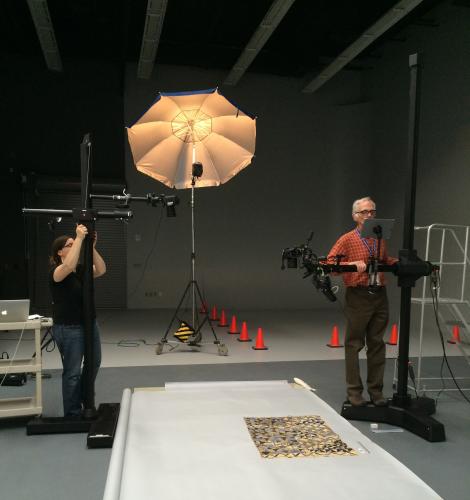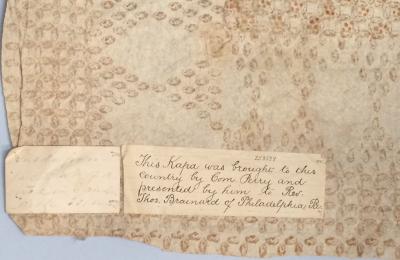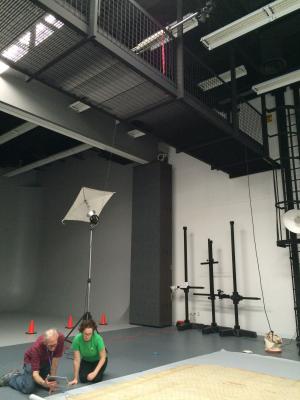
Over the past year, the Yale Peabody Museum has been working on a project to conserve, photograph and rehouse 180 tapa cloths from the Anthropology Division’s Collection. These bark cloths are a small portion of the approximately 15,000 ethnographic objects from Oceania and SE Asia in the collection and are among the 8,500 objects which were recently relocated to improved storage conditions at West Campus. Most of the objects in this collection were acquired as a result of systematic fieldwork by Yale faculty and graduate students in New Guinea, the Philippines, Malaysia and the Solomon Islands. The collection also showcases donated materials hailing from Polynesia, Micronesia and Melanesia.
Tapas are thin ‘cloths’ created from the inner bark of trees. Although the primary uses of these cloths have changed, they have been crafted for thousands of years in the same manner. Manufacture is a community effort involving cultivation, preparation and ornamentation. The substrate is prepared from stripped mulberry tree bark through a process of soaking, beating and drying. This process yields flat sheets that can be pasted with a plant-based glue for larger dimensions. Dyes, derived from plants, are then applied in abstract patterns and natural motifs unique to the cultural identity and artistic desires of their creators. Tapa served as a predecessor to textiles and was used for clothing before cotton and other textiles were adopted in Oceania. Tapas continue to be created and prized as ritual items. These cloths have traditionally been featured in ceremonies, used as a form of currency, and included in dowries.
This digitization project has been planned to coincide with a conservation and rehousing initiative. Tapa cloths have undergone cleaning and repair before being brought to the IPCH Digitization Lab for high-resolution visible, infrared and ultraviolet photography. The imaging team consists of Bill Guth (photographer), Aliza Taft (conservation intern), Diane Girvin (volunteer), and Rebekah DeAngelo (museum assistant). The group has worked to image 150 tapa so far, and estimates that the remaining 30 will be repaired in the newly opened IPCH Conservation Lab and ready for imaging before the project wraps up at the end of this year. The new images will be available to the Yale community and public through the Peabody Anthropology Online Catalog and the Yale Cross Collections Discovery website.
Special thanks to Jens Stenger, Associate Conservation Scientist with the Technical Studies Lab at IPCH, for his help with IR and UV photography. Also invaluable was Catherine Sease, Senior Conservator at the Yale Peabody Museum, for her help in establishing treatment plans for these special objects.
According to an accompanying handwritten note, this tapa was brought to this country by Commander Perry and presented by him to Reverend Thomas Brainerd of Philadelphia, Pennsylvania.
Bill Guth and Conservation Intern Aliza Taft inspect the composition of the shot on his iPad, which is connected wirelessly to the camera mounted on the catwalk above.







